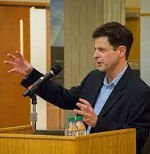Hollow Core Fibers: Past, Present & Future
Hosted By: Fiber Optics Technology and Applications Technical Group
10 November 2020 11:00 - 12:00
Eastern Time (US & Canada) (UTC -05:00)Glass optical fibers have revolutionized many aspects of photonics from telecoms and high power lasers through to sensing the physical environment. Despite the huge technological and commercial success, glass optical fibers are subject to a number of inherent limitations due to the material properties of silica, which restrict for example the usable spectral bandwidth, signal latency and the optical power levels that can be transmitted without damage. By contrast, hollow core optical fibers (HCFs) guide light in air or vacuum core opening up a wide range of exciting possibilities including low latency communications, high power laser transmission and the possibility to enhance or suppress nonlinearity to name a few.
In this webinar hosted by the OSA Fiber Optics Technology and Applications Technical Group, Thomas Bradley from the University of Southampton will review the development of HCFs starting with the Hollow Core Photonic Bandgap Fiber (HC-PBGF) to the more modern Hollow Core Anti-Resonant Fibers (HC-ARF). Dr. Bradley will review how these fibers guide and confine light, and how that understanding has developed and driven the most recent state of the art developments in Nested Anti-Resonant Nodeless Fibers (NANFs) whose loss values are now within a factor of two (0.28 dB/km) of those of state-of-the-art single mode silica fibers used in the telecommunication networks of today (0.15 dB/km).
What You Will Learn:
- Physics of mode propagation in hollow core photonic fibres
- Optical performance and advantages compared to their conventional glass counterparts
- History and state of the art fabrication technologies
- Applications
Who Should Attend:
- Scientists
- Students
- Optical engineers
About the Presenter: Thomas Bradley, University of Southampton
 Thomas Bradley received an MPhys degree in 2009 and a PhD degree in 2014 from the University of Bath, UK. His PhD and earlier career research has focused on the fabrication, characterization and loading of gas species in both anti-resonant and photonic bandgap hollow core fibres. He joined the Optoelectronics Research Centre (ORC) in 2014 where he currently works as a senior research fellow in the microstructured/hollow core optical fibre group. His current research interests include the fabrication of low loss anti-resonant hollow core fibres, development of novel characterization tools for optical fibres and gas filling in hollow core fibres. In 2014 he was awarded the best early career presentation prize at the EPSRC manufacturing the future conference.
Thomas Bradley received an MPhys degree in 2009 and a PhD degree in 2014 from the University of Bath, UK. His PhD and earlier career research has focused on the fabrication, characterization and loading of gas species in both anti-resonant and photonic bandgap hollow core fibres. He joined the Optoelectronics Research Centre (ORC) in 2014 where he currently works as a senior research fellow in the microstructured/hollow core optical fibre group. His current research interests include the fabrication of low loss anti-resonant hollow core fibres, development of novel characterization tools for optical fibres and gas filling in hollow core fibres. In 2014 he was awarded the best early career presentation prize at the EPSRC manufacturing the future conference.
